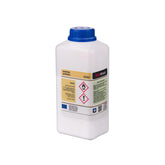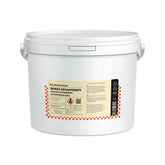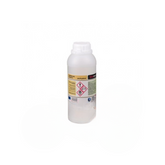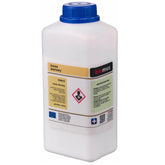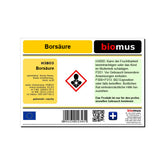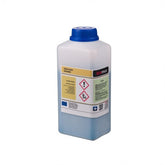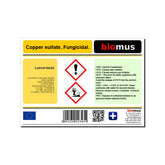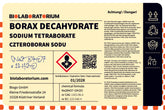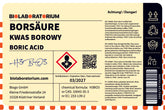Turpentine – Versatile natural product for home and workshop
Turpentine is a versatile natural product that has been used in industry and households for centuries. This natural solvent has a long tradition and offers numerous applications – from cleaning to paint processing to technical uses. In this blog post, we take a closer look at the properties, applications, and safe handling of turpentine.
Turpentine – What exactly is it?
Turpentine is a volatile essential oil derived from the resin of various coniferous trees. It mainly consists of terpenes, organic compounds responsible for its characteristic odor and solvent properties.
Traditionally, turpentine was obtained by tapping and distilling resin from pine, spruce, and other coniferous trees. Today, it is mostly produced industrially, with slight variations in composition depending on origin and production methods.
Properties and applications of turpentine
Turpentine possesses a range of useful properties that make it a versatile natural product:
Solvent properties
As an organic solvent, turpentine can dissolve various substances such as resins, fats, oils, and waxes. It is therefore widely used in the paint, varnish, and adhesive industries, as well as in cleaning products.
Flammability
Turpentine is highly flammable and burns with a bright flame. Therefore, caution must always be exercised during handling, and open flames should be avoided.
Odor and evaporation
The characteristic aromatic smell of turpentine comes from volatile terpenes. These also evaporate relatively quickly, making turpentine a suitable thinner for paints and varnishes.
Chemical reactivity
Turpentine can react with oxidizing agents, acids, and bases. Therefore, compatibility must be considered during use.
Biodegradability
As a natural product, turpentine is biodegradable and more environmentally friendly than many synthetic solvents.
Health aspects
In pure form, turpentine can be harmful to health upon skin contact, inhalation, or ingestion. However, when used properly with safety measures, it is safe.
Application areas of turpentine
Due to its diverse properties, turpentine finds applications in numerous industries:
Paints, varnishes, and adhesives
Turpentine serves as a solvent and thinner for oil and varnish paints, lacquers, varnishes, and adhesives based on natural resins.
Cleaning and Degreasing
In cleaning products such as turpentine substitutes, degreasers, and stain removers, turpentine is used to remove oil, grease, wax, and resins.
Woodworking
Turpentine is used in painting, varnishing, and polishing wood. It also serves to remove wood preservatives.
Technical Applications
In industry, turpentine is used as a solvent for fats, oils, and resins, for example in the rubber, plastics, and electrical industries.
Medical Applications
In folk medicine, turpentine was historically used to treat respiratory, skin, and joint conditions. Today, it plays only a minor role in modern medicine.
Safe Use of Turpentine
Although turpentine is a natural product, caution must be exercised during handling. Several safety aspects should be observed:
Fire Hazard
Turpentine is highly flammable. Open flames, sparks, and intense heat must be strictly avoided. Applicable fire safety regulations must be followed during storage and use.
Health Risks
Pure turpentine can be harmful to health upon skin contact, inhalation, or ingestion. Therefore, it should always be handled with appropriate protective equipment such as gloves and respirators. Good ventilation is also important.
Environmental Compatibility
Although turpentine is biodegradable, improper disposal can contaminate water and soil. Therefore, residues and packaging must be disposed of properly.
Chemical Compatibility
Turpentine is incompatible with many chemicals, particularly oxidizing agents, and can trigger reactions. Therefore, caution is advised when mixing and combining substances.
By following these safety guidelines, turpentine can be safely and effectively used as a versatile natural product in household and industrial applications. With proper handling, users benefit from the numerous advantages of this proven solvent.
